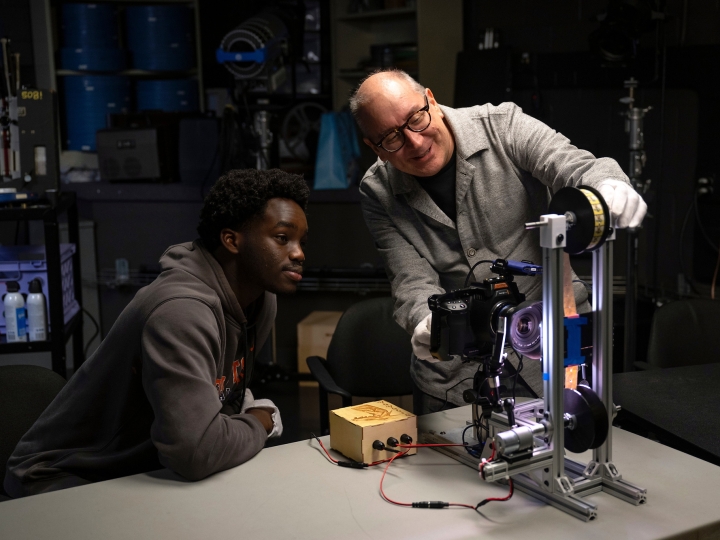Cool Classes: Art & Sex Through the Lens of Botany
March 16, 2018
What is it? Cross-Pollination: Art & Sex Through the Lens of Botany
Who teaches it? Professor Chris Martine, biology, and Professor Anna Kell, art & art history
Find Your Path
"This class is an introduction to making art and thinking critically, but through the unexpected lens of botany. Combining two areas of our expertise — art-making and floral biology — in an Integrated Perspectives course lets us approach both topics in a new way, rooted in our overlapping interests in the representation and 'meanings' of flowers.
"Students in this class learn about the biology of flowers: How do they work? What are their parts? Where did they come from? And how do they attract pollinators?
"As they learn about the science of flowers, they are also exposed to thinking about the ways flowers have been used in arts and culture to communicate cultural ideas and beliefs, particularly surrounding gender and sexuality. One way students explore these topics is by making art, which means they are also learning how to conceive, create and interpret artistic works. As a broader learning goal, we hope that once students get to know all the exceptional means by which flowering plants 'do sex,' they begin to understand that sexuality comes in many forms among the organisms of this planet — and that the idea of a 'normative' condition is rather flawed.
"One recent project focused on 'pollination syndromes,' which are examples of highly specific co-evolutionary relationships between flowers and pollinators. In groups, students researched an assigned pollinator and learned about the flower characteristics it prefers. They then used their research — and some new craft skills — to sculpt oversized models of these interactions with wire and paper. To end the project, we installed the works in the conservatory greenhouse on the roof of Rooke Science Center for a class critique.
"Our fields of study — and the skills necessary for each — are vastly different. Despite the contrast, there's an interesting exchange between a botany lecture and a studio project, or between a lab experiment and a group critique. The very fact that we had to retrofit a biology teaching lab to sometimes serve as studio art space says a lot. Science and art were bedfellows for a long time until recent decades, when they've grown into disparate and non-overlapping disciplines. In our small way, we are re-bridging that gap."
Are we missing out on a cool class? Send suggestions to coolclasses@bucknell.edu.

